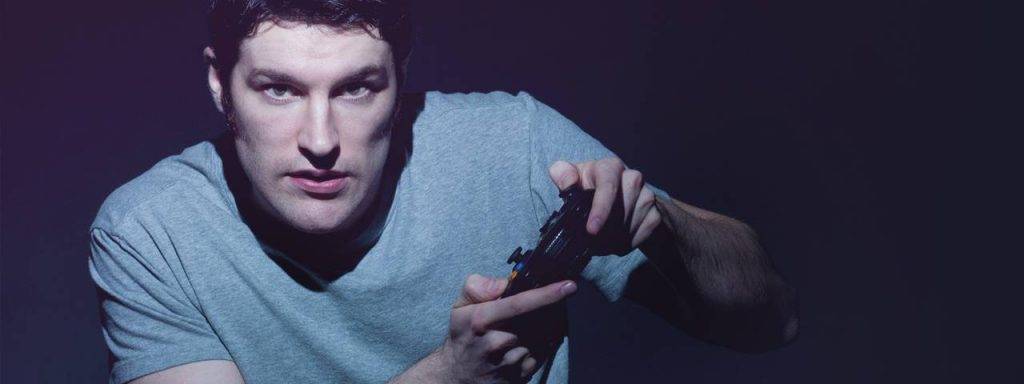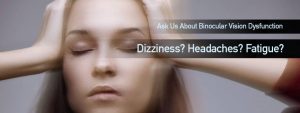These are the 10 most frequent questions asked to eye doctors on visual rehabilitation following a head injury.
You may easily find answers to your questions below. If you still have questions, contact your nearest eye doctor experienced in TBIs, concussion and vision therapy.
Q1: What is visual rehabilitation?
A: Visual rehabilitation is a customized treatment program designed to help patients who have suffered a neurological injury to regain their vision and visual skills.
Visual rehabilitation is often referred to as Neuro-optometric rehabilitation.
This therapy program has been specifically designed for people with vision impairments following a traumatic brain injury (TBI), or stemming from physical disabilities or other neurological conditions, such as a stroke, Parkinson’s disease or multiple sclerosis.
Visual rehabilitation focuses on strengthening the visual skills needed to perform regular daily activities with increased independence.
Q2: How does visual rehabilitation work?
A: Visual rehabilitation improves vision through therapeutic activities specifically designed to retrain the neural processes of the brain.
The brain’s neuroplasticity allows for the establishment of new neural pathways in order to regain function of the affected areas of the brain.
Each rehabilitative program is designed to retrain the neurological connections between the eyes and brain to improve the visual skills necessary for:
- Visual information processing
- Visual memory
- Balance
- Gait
- Motor skills
A visual rehabilitation program may include any of the following techniques or devices:
- Customized program
- Free-space activities
- Computer-based tasks
- Prism training
- Visual tracking and scanning
- Optical tints
- Yoked prism lenses
- Spotting/sector prisms
- Sector occlusions
The goal of each rehabilitative program is to reduce visual symptoms and improve visual function through the use of in-office and at-home neuro-rehabilitation exercises.
Q3: What’s the difference between visual rehabilitation and vision therapy?
A: Visual rehabilitation focuses on treating patients with visual problems caused by TBI, neurological conditions, and physical disabilities.
Neuro-optometrists will generally utilize therapeutic lenses, prisms, filters, and specific eye exercises to retrain the parts of the brain that have been affected by the neurological condition or incident in order to improve binocular vision.
Vision therapy is used to treat developmental vision problems, such as strabismus, lazy eye, convergence insufficiency, etc. and improve the visual skills needed for clear and comfortable binocular vision.
Vision therapy can be effective to improve learning, reading and school performance as well as performance on the sports field.
Visual rehabilitation and vision therapy are both effective treatments for a wide variety of vision conditions. However, while vision therapy is generally recommended for developmental vision problems, neuro-optometric rehabilitation is recommended for acquired vision problems.
Q4: Which vision problems can be treated with visual rehabilitation?
A: Visual rehabilitation can improve binocular vision for a wide variety of vision problems caused by a TBI or neurological condition, including:
- Eyestrain
- Convergence insufficiency
- Tracking and scanning difficulties
- Focusing and fixating difficulties
- Double vision (diplopia)
- Strabismus (eye turn)
- Visual field loss
- Loss of central vision
- Visual neglect
Contact an eye doctor near you if you have recently had a traumatic brain injury.
SEE RELATED: What Are Prism Lenses?
Q5: How can vision be affected by a brain injury?
A: Traumatic brain injuries can interrupt the communication between the eyes and the brain and lead to a number of visual dysfunctions:
- Blurry vision
- Double vision
- Eye strain
- Sensitivity to light
- Reading difficulties
- Attention and concentration difficulties
- Dizziness and imbalance
- Poor depth perception
- Spatial disorientation
- Bumping into objects when walking
- Difficulty walking or maintaining posture
- Inability to maintain eye contact or focus
- Reduction or loss of visual field
A TBI can also cause specific difficulties with eye movements, such as:
- Ocular pursuits (eye tracking ability)
- Saccades (shifting gaze quickly from one point to the other)
- Accommodative inability (focusing)
- Binocular vision (3D vision, stereopsis)
- Eye alignment (eye turn)
Q6: Do vision problems surface immediately following a brain injury?
A: No, visual symptoms following a brain injury can take a few days or weeks to develop. However, a neuro-optometrist may be able to detect visual problems, even before any symptoms appear.
Therefore, even if visual symptoms do not present immediately following a stroke, it is important to be seen by a neuro-optometrist as soon as possible to avoid potential complications and begin treatment.
Q7: What’s the difference between a neuro-optometrist and a neuro-ophthalmologist?
A: Neuro-optometrists diagnose and treat the visual skills that have been affected by neurological conditions and traumatic brain injuries (TBI).
Through rehabilitative treatment, neuro-optometrists retrain and strengthen the neural connections in the brain to improve binocular vision.
If you have sustained any type of brain injury, either from concussion, sports collision, car accident, physical violence, stroke, or any other source, a neuro-optometrist may be able to help you.
Neuro-ophthalmologists are medical doctors who sub-specialize in neurology and ophthalmology. The focus of their work is on the medical and surgical treatments for vision conditions that stem from problems within the nervous system, such as optic nerve inflammation or tumors in the visual pathways.
You may be referred to a neuro-ophthalmologist if you are experiencing vision loss following a TBI or stroke, or as a result of inflammation, infection, or tumor.
Q8: Why does visual rehabilitation need to include other medical specialists?
A: An interdisciplinary team typically involves optometrists, physical therapists, occupational therapists, psychologists, and other medical specialists.
A team of doctors and therapists can offer the most effective rehabilitation for patients who have suffered a TBI or stroke, or have been diagnosed with a neurological condition.
Q9: Who can benefit from visual rehabilitation?
A: If you have been diagnosed with any of the following conditions, or have recently suffered a TBI or other traumatic event, you may benefit from a program of neuro-optometric rehabilitation.
- Head and traumatic brain injury (TBI)
- Concussion
- Sports collision
- Stroke and cerebrovascular accidents (CVA)
- Motor vehicle accident
- Physical violence
- Cerebral palsy (CP)
- Parkinson’s disease
- Multiple sclerosis
- Diabetic neuropathy
Q10: How long does the rehabilitative process take?
A: Each rehabilitation program is customized to the individual needs of the patient and the duration of each program will depend on the severity of the injury and the extent of the visual impairment.
The duration of a neuro-rehabilitative program can last from several weeks or months to several years.
LEARN MORE: Guide to Neuro-Optometry
To learn more about neuro-optometric rehabilitation and find out if you can benefit from a customized visual rehabilitation program, schedule an appointment with a neuro-optometrist near you.








